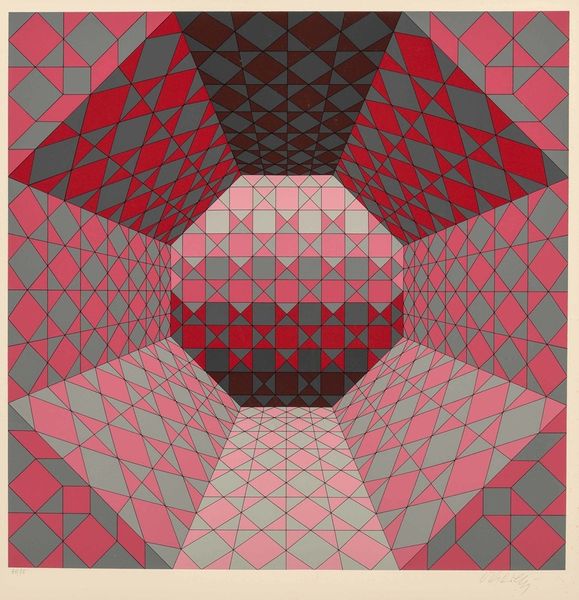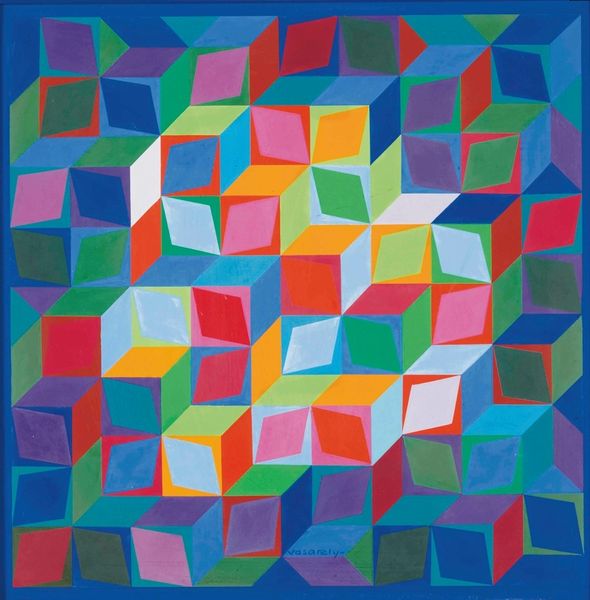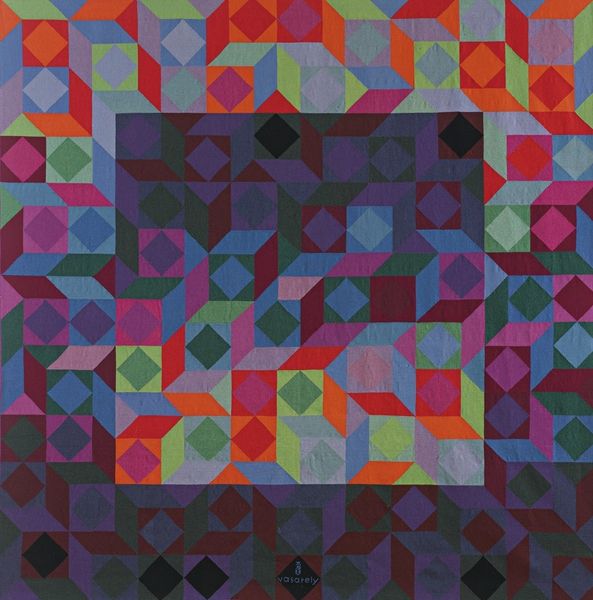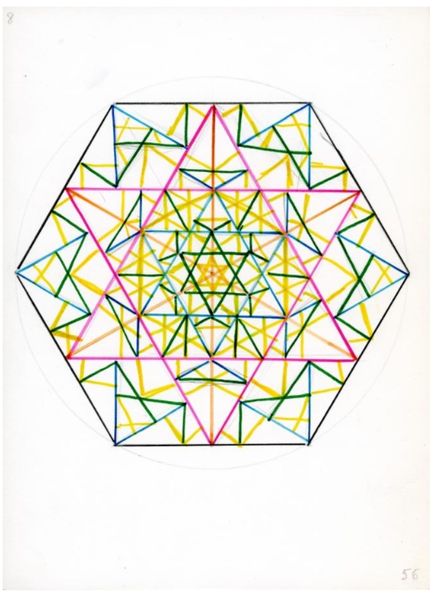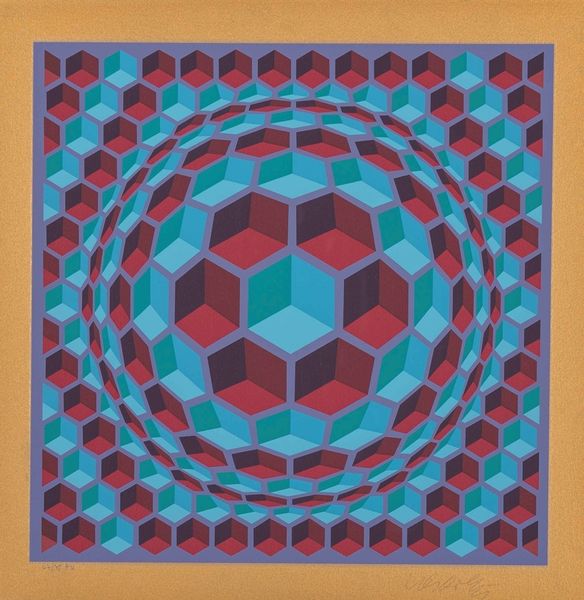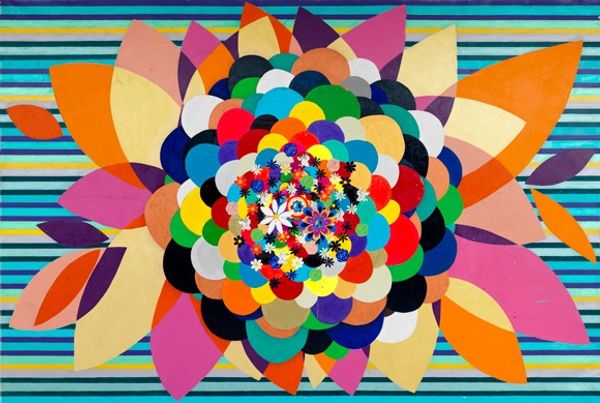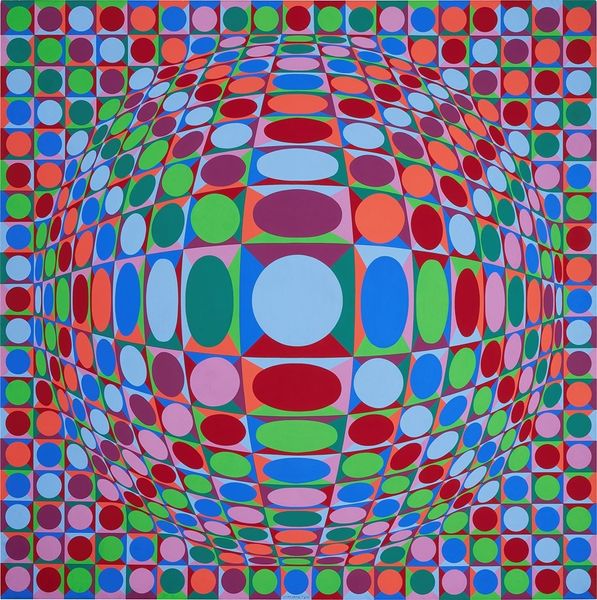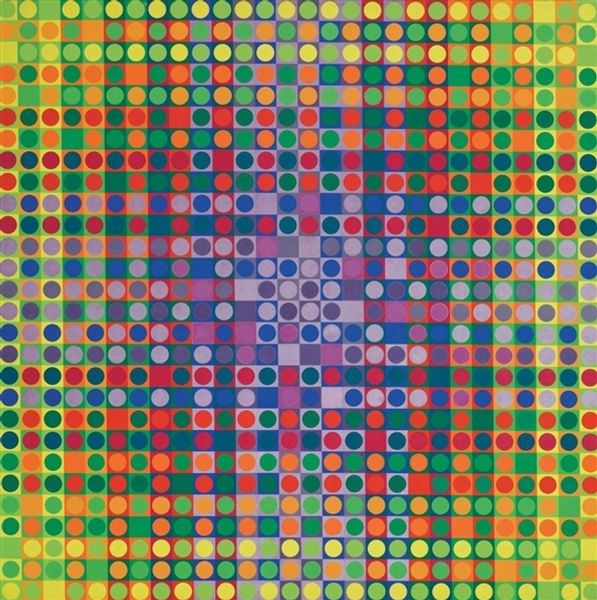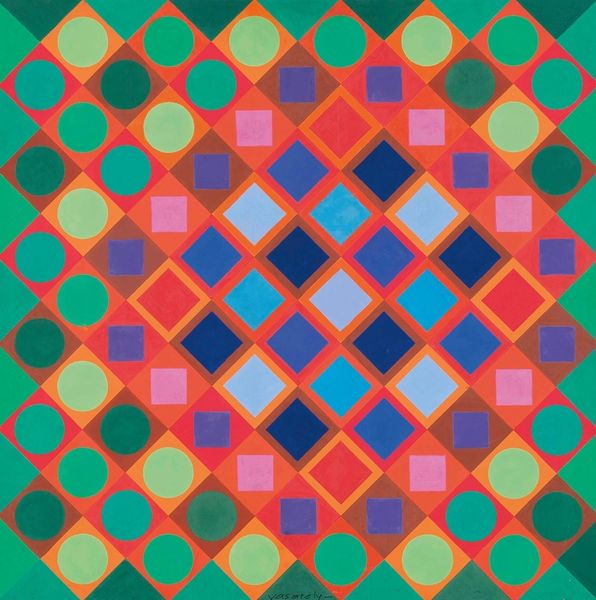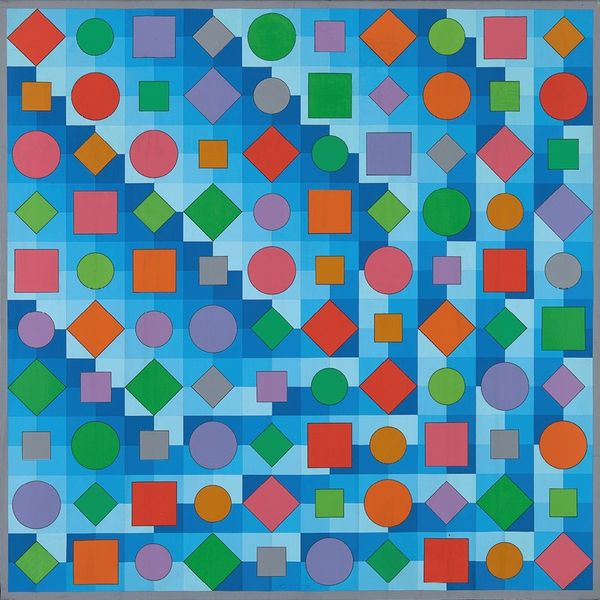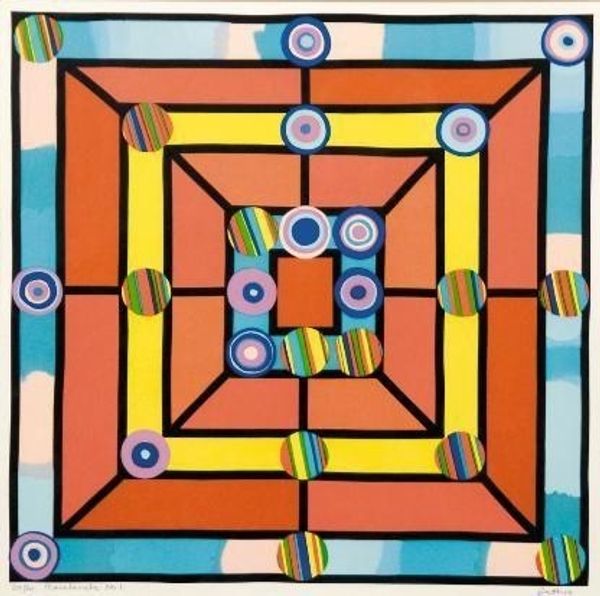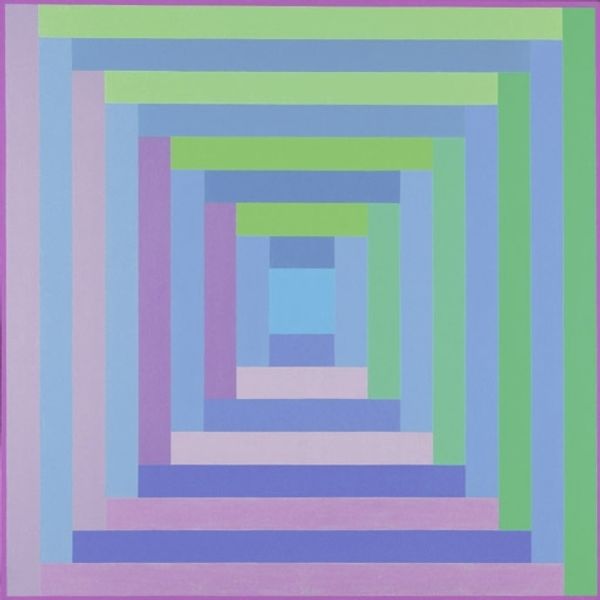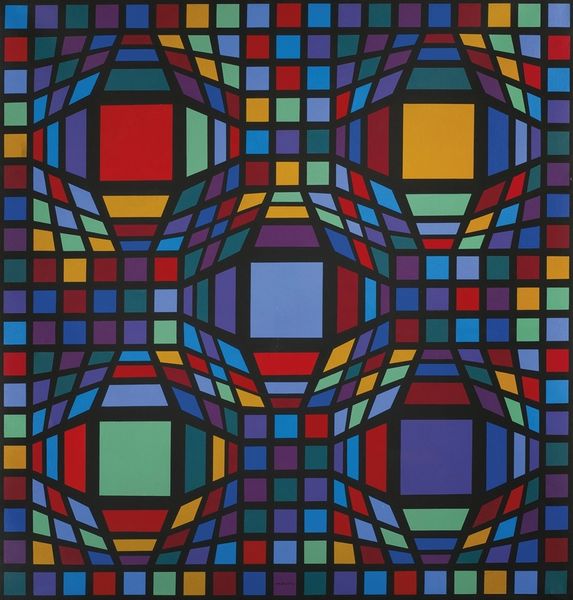
#
folk-art
#
geometric pattern
#
folk-art
#
geometric
Dimensions: overall: 25.7 x 36.4 cm (10 1/8 x 14 5/16 in.)
Copyright: National Gallery of Art: CC0 1.0
Editor: Here we have "Quilt," created around 1936 by Mabel Ritter. It seems to be a drawing of a quilt, maybe a design for one, with vibrant geometric patterns. The way those hexagons are arranged in circles really catches the eye, but I'm curious, what do you see in this piece? Curator: Well, first, I notice it's not actually a quilt, but a drawing *of* one. This distinction is important. Why create an image *of* a domestic object rather than making the object itself? It invites us to consider the role of drawing within the decorative arts at the time, its potential as a medium for planning and imagining within a craft largely associated with women, community, and the domestic sphere. Does it suggest limitations in access to material, or rather the will to overcome social barriers by imagining them? Editor: That's interesting. I was thinking about it in terms of the final product, but viewing it as a step in the creative process makes me rethink its purpose. So, you’re saying this drawing has something to say about the role of women in craft and possibly constraints they faced? Curator: Precisely. In the 1930s, what were the spaces, the permissions granted or denied, for women's artistic expression? Quilting, a collective and often anonymous practice, versus drawing, an individual pursuit. Ritter might be exploring this very tension. Consider how museums might historically categorize this as 'craft' and what the implications might be for its visibility alongside what they deemed ‘fine art.’ Editor: That's given me a lot to think about. I had initially viewed it just as a pretty pattern, but now I understand that it tells a broader story about women’s creativity, and the cultural view on them. Curator: Exactly! By looking closely, we start to see how social forces shape artistic production, perception, and preservation, revealing a richness beyond the visual appeal. We need to constantly challenge which kind of creativity museums value most.
Comments
No comments
Be the first to comment and join the conversation on the ultimate creative platform.
